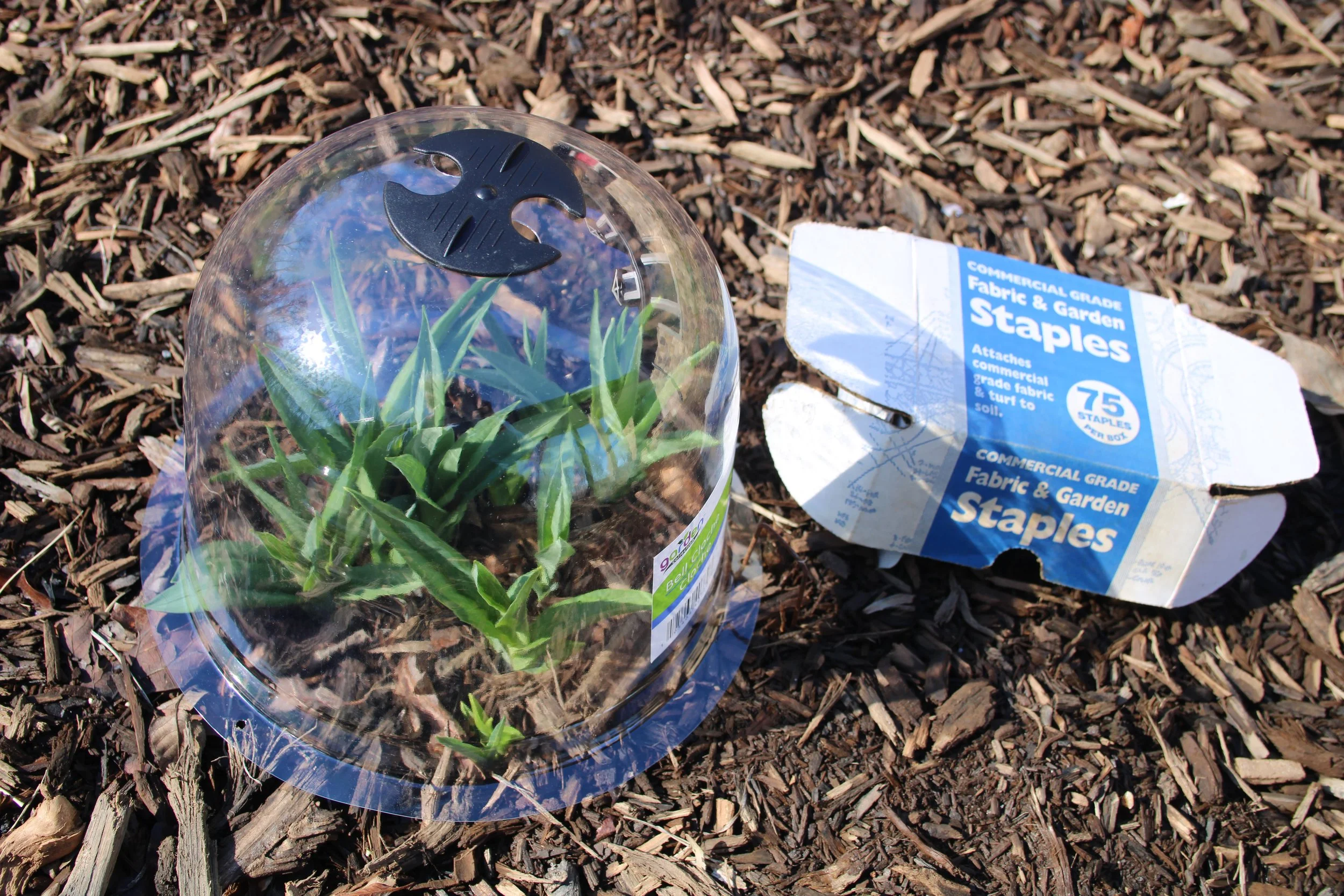I have no self-restraint when it comes to starting seeds indoors. Every year I begin too early and then I’m faced with seedlings that need to be planted outdoors or risk the danger of them becoming rootbound in their starter trays. I study the average temperature charts and review weather projections like a professional meteorologist. I transplant too early, and inevitably face a late frost. Then, I scurry around with row covers, old sheets, milk jugs, carboard boxes, and anything else I can find to protect my precious babies. Does this sound familiar to you?
Please, follow my advice and not my example. Seed packages provide the length of time before germination occurs. Find your last frost date and count backwards to the proper seed starting date for your area. My best results come when transplants have at least two pairs of leaves, not counting the cotyledons (“seed leaves”). Planting out a few days late is far better than planting out a few days too early. Cold-nipped tender plants take time to recover, so there is no gain from a head start.
Seeds have a specific temperature range for germination, so if you direct sow outdoors before the soil has warmed, they will sit until the temperature is right. In worst cases, they rot and die instead of sprouting. To learn the first frost and last frost dates for your zip code, visit https://garden.org/apps/frost-dates/ . To determine the soil temperature for your zip code visit https://www.greencastonline.com/tools/soil-temperature . The USDA Cold Hardiness Zones were updated in 2023 to reflect current data. My zone changed from 7b to 8a. To check the zone of your garden, visit https://planthardiness.ars.usda.gov/ .
While we think of 32 degrees as the magic point, frost can occur at temperatures below 36 degrees. A light breeze and high humidity help prevent frost formation. Cold air sinks, so garden beds located at the lowest part of your property may be a few degrees cooler than higher points. But gardening on a hilltop has its own challenges. For every 1,000 feet of elevation increase, temperatures drop 3 to 5 degrees below the average forecast. Gardens located near your house can benefit from the stored heat radiated by sun-heated buildings.
Frost is most likely to occur when skies are clear and temperatures fall in the afternoon. Clouds act like a blanket, retaining the sun’s heat near the surface. If you need to cover plants, get those sheets or whatever in place before sundown to maximize the amount of heat trapped. And don’t forget to remove them. One year I lost every tomato plant in my garden because I left glass quart jars over them while I rushed off to the office. Yes, they made it through a frosty night fine but then cooked to death when the sun came out and heated them through the glass. If only I had waited.
I found these clear plastic domes (“cloches”) at one of those stores where everything is $1.25. They have an adjustable air vent at top and pre-made holes around the bottom lip so they can be secured in place with a couple of landscape staples. Not as elegant as the classy glass ones, but easier to store and definitely cheaper.

